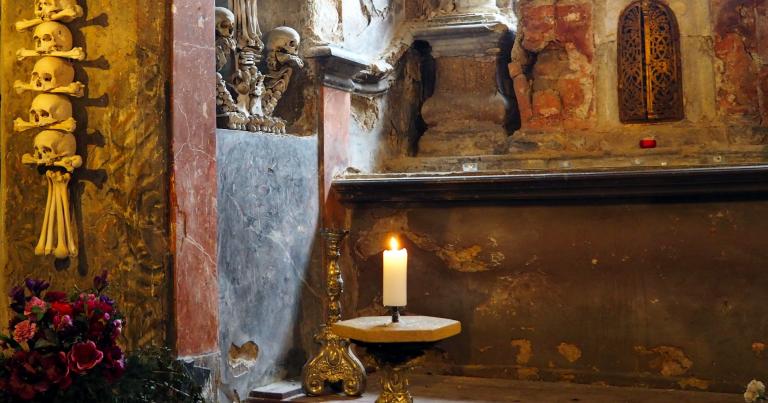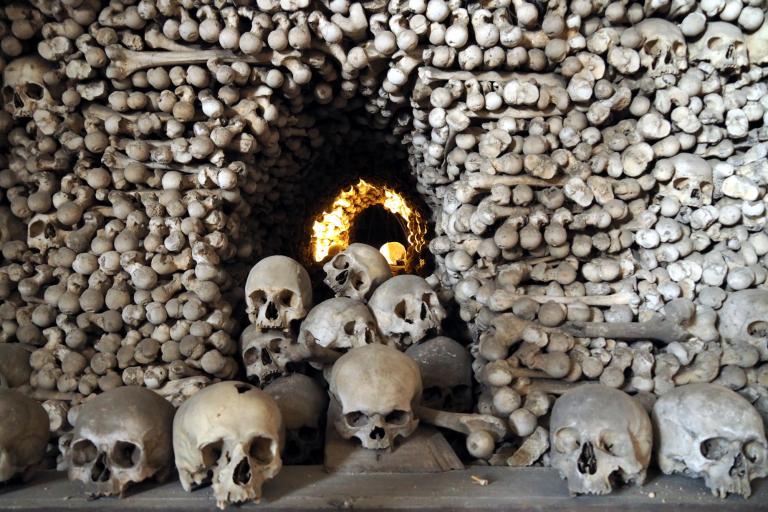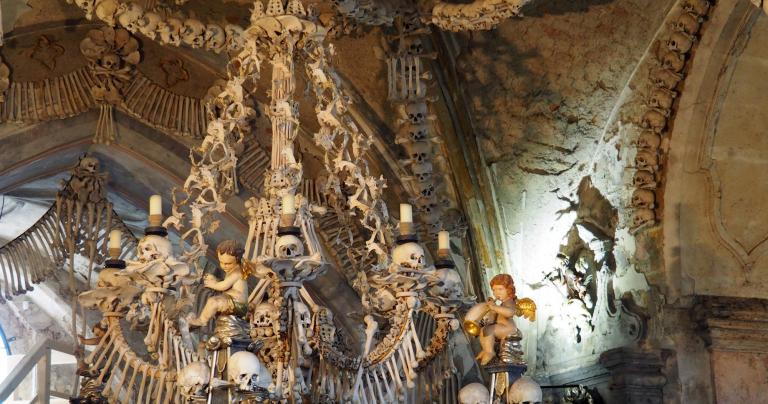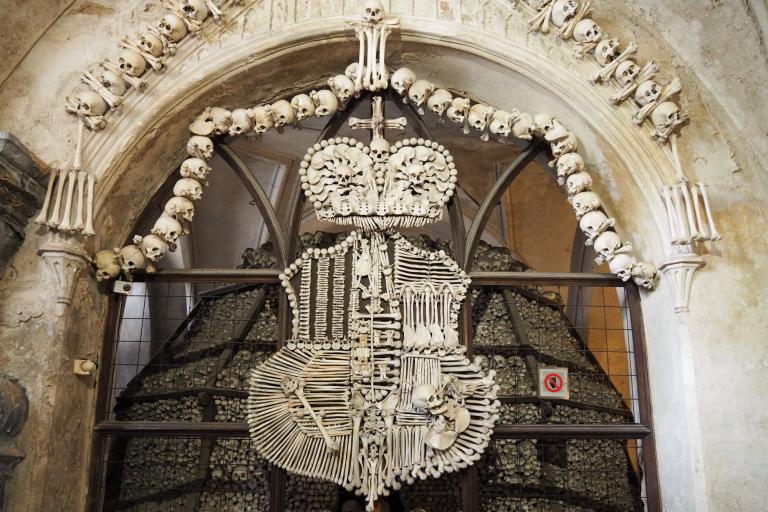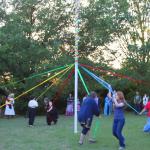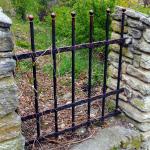On a recent trip to the Czech Republic I visited Kutna Hora, a small town about an hour east of Prague. It’s a former mining town (the silver ran out in the late Middle Ages) now best known as the home of the Sedlec Ossuary – the Bone Church.
While not common, ossuaries (bone depositories) can be found throughout much of the ancient Christian world. But there’s nothing quite like this. It looks like something built by Goths – that would be fans of Siouxsie and the Banshees, not the Germanic tribe that overran Rome – but it’s a Roman Catholic church.
Taken together with some of the sights around Prague, the Bone Church left me with some strong impressions I think are relevant to all of us, whether Pagan, Christian, or otherwise.
The story of the Bone Church
In 1278 a monk returned to Kutna Hora from a trip to Palestine. He brought back some dirt from where legends said Jesus was crucified, which he spread around the local cemetery. That made Kutna Hora a popular place to be buried. Throw in a few wars and the Black Plague and the cemetery became quite full.
In the 1400s local officials decided to build a new church. When they started digging the foundation they found bones. Lots of bones. At least 40,000 people worth of bones.
At first they simply stacked them up. In the 1800s they began to arrange them as you see today.
If you want more details, the Wikipedia entry lines up well with the story our local guide told us, so I assume it’s more or less correct.
Any attempt to provide a simple interpretation of something that is the product of so many people and so many forces (religious, social, and economic) over so many centuries is bound to be wrong. The Bone Church is a work of art, and works of art have lives of their own, speaking different things to different people at different times.
It certainly spoke to me.
Memento Mori
I never heard the words memento mori (“remember you will die”) until I watched Penny Dreadful – one of the many things I missed growing up Baptist. I heard plenty of hellfire sermons that served the same purpose, but Protestants and especially Calvinists prefer words to images. That’s another topic for another time, and possibly for another blog.
Life expectancy in medieval Europe was a little over 30 years. Childhood diseases, childbirth, war, plague, and famine made death ever-present. But this imagery does not merely speak of death.
It speaks of judgement.
Artwork of the period shows a stark division of the dead. Live as the church tells you to live and angels will carry you to heaven. Do otherwise and demons will drag you to hell. Even today Christians disagree on what it takes to end up in the good place and not the bad place. As a Unitarian Universalist I reject the idea of eternal punishment for anyone. As a Pagan I believe our actions in this life affect our place in the next life, but I do not believe anyone is forever damned.
I find it interesting that I visited the Bone Church in between the time I wrote What To Do With My Body After I’m Dead and the time it was posted. As I said in that post, it is good and necessary to think about your death, for death is certain. Our contemporary culture denies death, hides it away and sanitizes it. This is not healthy. Surely there is a middle way in between these two approaches.
As a Pagan I’m committed to finding one, and then following it.
The bodies of the dead are not ours
Someone asked me about the energy in the Bone Church. I’m not sure “energy” is the proper word, though in the modern Pagan sense of the term we all understand what that means. I prefer to think of the spirits of that church, and the spirits in the church.
From my impressions and in the context of my thoughts on such things, I think the vast majority of the souls have moved on. I’m not sensitive enough to tell how much of what’s still there are Earth-bound spirits and how much are simply residual impressions. Of the spirits that are there, most are happy to be in a sacred place, a place that is not forgotten even if it is not the home of an active congregation.
But some of the spirits are not happy. They wanted to be buried in the “super consecrated” soil. They were, but then their bones were dug up, scrubbed up, and hung up on display.
As with the Celtic bog bodies and Egyptian mummies in museums, these dead have not been treated according to their wishes in life.
I do not call for their reburial. That’s a very complicated issue and I do not have enough connections to this church, these people, and their descendants to form a strong opinion. But I do encourage all of us to think of the dead as persons who, like all persons, are due our respect and our reverent care.
Live life – accept death
There is, I think, a good middle way between the death-obsessed culture of the Middle Ages and the death-denying culture of the contemporary West.
You will probably live long – prepare for the future. You may die tomorrow – enjoy life today. You will certainly die someday – make your final arrangements.
What comes after death remains a mystery. I am convinced we live on in the Otherworld for a while, and then return to this world to continue learning, growing, and doing the great work of humanity.
And though I come to very different conclusions, I left Kutna Hora very much in the spirit of memento mori: think on your death.


